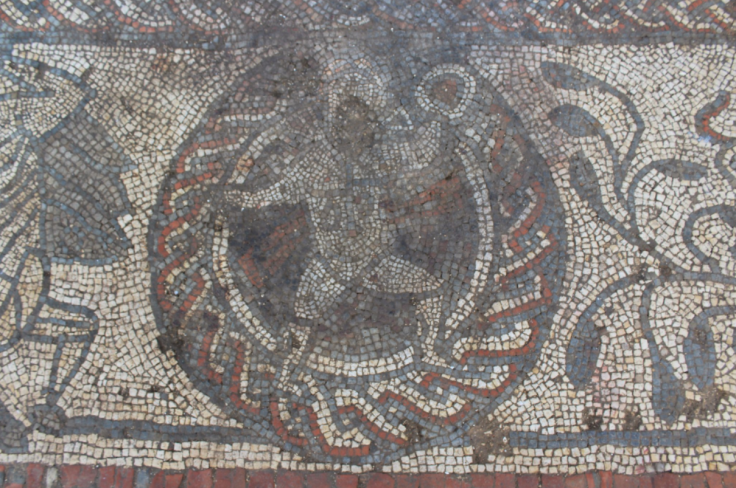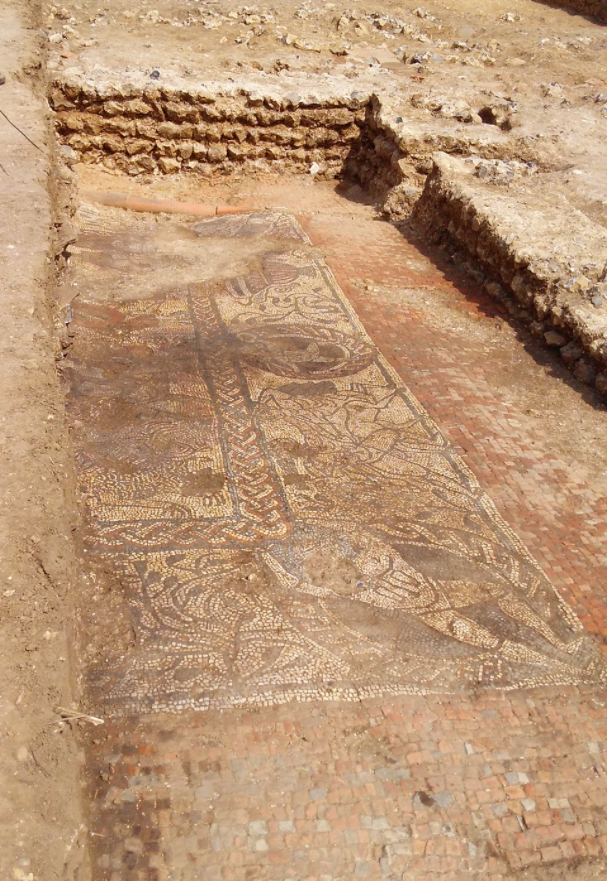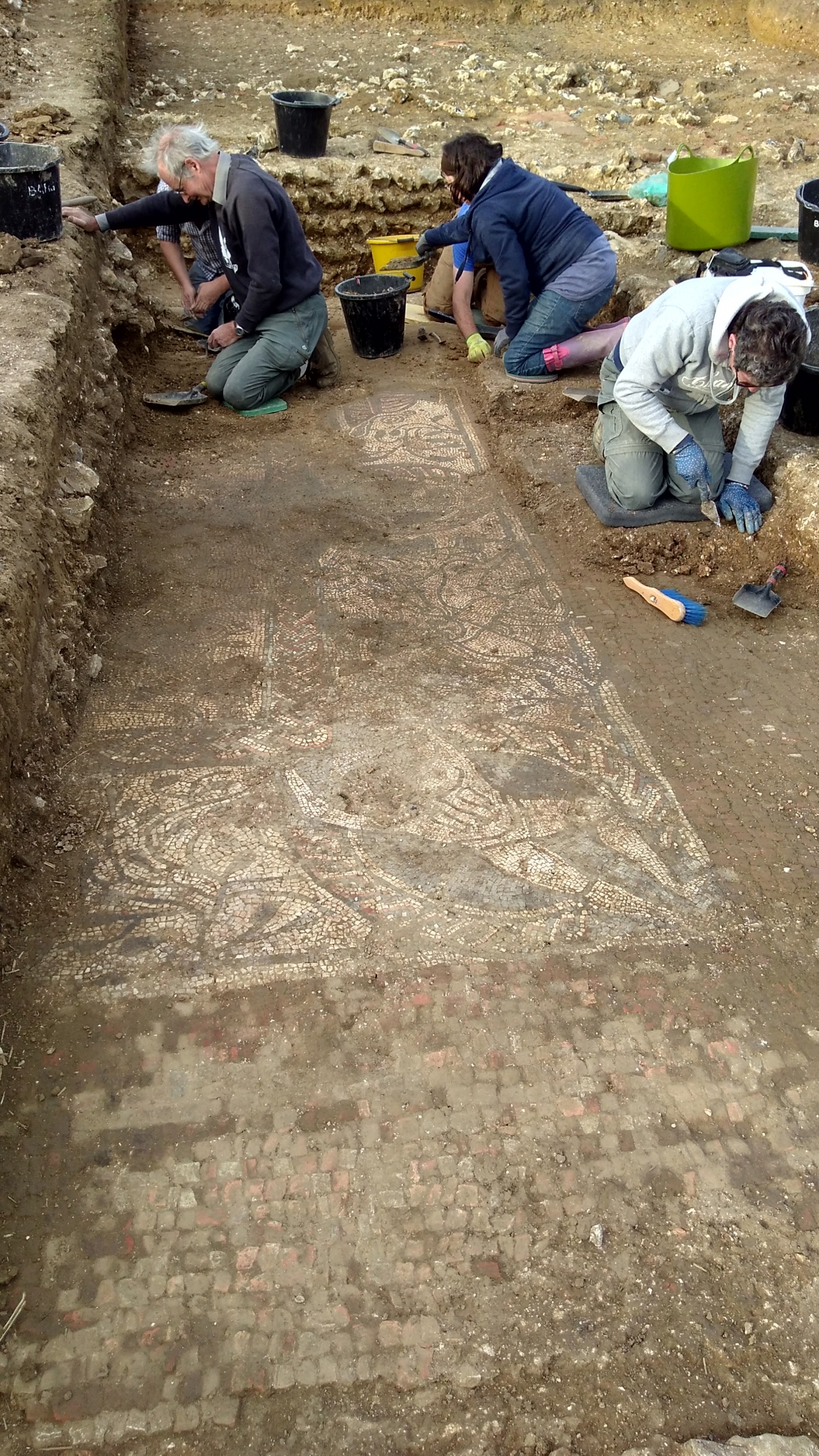One-of-a-kind Roman mosaic depicts incredible battles between beasts and heroes of ancient mythology
Bellerophon, Pegasus, the Chimaera, Hercules, centaurs and Cupid all feature in this unprecedented discovery.
A 1,600-year-old Roman mosaic unearthed in Boxford in West Berkshire is "the most exciting mosaic discovery made in Britain in the last 50 years", archaeologists have said.
The mosaic dates from 380 CE, in the last decades of Roman rule in Britain. It is 6 metres long, showing a range and combination of images that have not been seen on a Roman mosaic in the UK before.
The central scene depicts a hero from Greek mythology, Bellerophon astride the winged horse Pegasus as he attacks the Chimaera, a fire-breathing monster with the head of a lion, torso of a goat and rear of a dragon. This is the myth that is later converted by Christians into the tale of George and the Dragon.
"The range of imagery is beyond anything seen in this country previously," Duncan Coe, project lead officer at Cotswolds Archaeology, one of the groups carrying out the excavation, told IBTimes UK.
"That includes some elements that are entirely unique to this site, which is why we've all got very excited about it. In terms of understanding the art history from this period of late Roman Britain, this is a unique find."
Less than half of the mosaic has been uncovered so far, but already it has yielded several surprises. It has inscriptions, rare on a mosaic, which have not yet been deciphered. It is thought that they could relate to the central compartments, which show scenes from Bellerophon's life.
The second scene in the central compartment, viewed from a different direction, is thought to be King Iobates seated centrally, offering his daughter Philonoe on the left to Bellerophon on the right. This was a reward for Bellerophon for killing the Chimaera and succeeding in a number of other tasks.
"This scene is rarely depicted in mosaic and no Romano-British examples are known," noted Dr Patricia Witts, an independent Roman mosaic researcher and author who evaluated the find.
In another scene, a man wearing a lion skin – thought to be Hercules – fights a centaur with a club. Exactly which centaur this is has yet to be determined. Regardless, there are no other definite examples of a centaur in mosaics from Roman Britain.
Elsewhere on the mosaic, Cupid, with his tiny triangular wings, sits in a round frame holding a wreath thought to represent one of the seasons. In the corners, the mythical figures of Telamon, giants and Atlas extend from their frames – as Cupid does – in a way not normally seen in Roman mosaics. Some of the figures' lower legs morph into snakes curling up alongside them.
While the imagery is stunning in its range, the finer details of the mosaic are a little crude. It is thought that a particularly ambitious patron may not have been able to afford or acquire craftsmen of the highest calibre.

The size of the villa is also puzzling. For such a grand mosaic, the building is rather small. The artwork was discovered among the remains of an otherwise unremarkable medium-sized villa.
"This is a very high-status, probably quite expensive thing to be making," said Coe.
The incongruous setting of the mosaic in a modest villa raises several questions. What kind of person wanted to be seen to have this cultured background, despite having only moderate resources? What was happening in the local economy to allow them to build the mosaic?
He adds: "That's why something like this is so important in understanding Roman Britain and what was happening in at the end of the Roman administration."
The site was gradually being excavated for a short period each summer since 2011 by the local historians at the Boxford History Project, volunteers from the Berkshire Archaeological Research Group and the commercial firm Cotswolds Archaeology. The bulk of the excavation was a community effort by local volunteers, with the guidance of professional archaeologists.
The team plans to finish excavation and cleaning of the mosaic to see what the other half reveals.



© Copyright IBTimes 2025. All rights reserved.





















